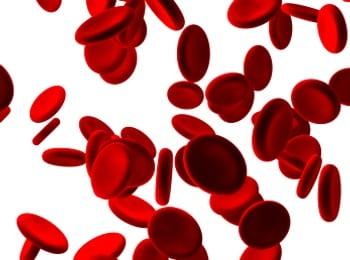This month, researchers from 23andMe, the National Institutes of Health (NIH), and Johns Hopkins University School of Medicine presented preliminary data from what is now the largest and most diverse genetic study of sickle cell trait ever done.
Link to pulmonary emboli
The study included data from more than 3.7 million customers who consented to participate in research, including 18,000 with sickle cell trait.
The study found that having sickle cell trait — being a carrier for sickle cell anemia or having one copy of the HbS variant in the HBB gene — is associated with an increased risk for blood clots in the lungs, known as pulmonary emboli.
Someone who has sickle cell trait will not develop sickle cell anemia. However, their children could be at risk of inheriting sickle cell anemia if both parents have sickle cell trait.
While being a carrier does not put you at risk for sickle cell anemia and most individuals will not have any associated health complications, this study and others have shown that sickle cell trait is a risk factor for pulmonary emboli. This study revealed for the first time that this risk exists regardless of ancestry, which has implications for clinical guidelines for individuals who have sickle cell trait.
“We were able to validate the link for venous thromboembolism that smaller epidemiologic studies have shown in the past and identify that this link was predominantly for pulmonary emboli and not for deep vein thrombosis,” said Rakhi P. Naik, MD, MHS, Clinical Director for the Division of Hematology at Johns Hopkins and a lead researcher on the study.
“These findings are particularly important because they suggest a unique mechanism of thrombosis in individuals with sickle cell trait,” Naik continued. “Clinicians should be aware of the increased risk of pulmonary embolism in sickle cell trait, especially in high-risk situations such as surgery.”
A significant study
An abstract on the findings and more detail on the study was presented at the American Society of Hematology’s annual meeting.
“While the initial findings are interesting, the more significant aspect of this study is the size and diversity of the research cohort,” said Vence Bonham, JD, acting Deputy Director of the National Human Genome Research Institute (NHGRI) of NIH, associate investigator in the NHGRI Intramural Research Program, and leader of the NHGRI Health Disparities Unit.
“This preliminary data represents just a first glimpse at the work from this collaboration,” said Bonham, adding that the study is significant because it is not just being conducted among individuals from one ethnic or ancestral background.
Study participants included nearly 200,000 individuals of African ancestry and ~550,000 people of Latine descent, in addition to ~3 million participants of European descent. Most previous studies have been performed solely in African ancestry cohorts, so this study is significant for including multiple population groups and for its sheer size.
The study’s associations are consistent across all studied ancestral groups, reinforcing that sickle cell trait and its associations are relevant for many carriers.
More than 100 million people worldwide have sickle cell trait, including one million to three million Americans. About eight-to-ten percent of African Americans are carriers, but sickle cell trait can also be found in people of any ethnicity. Sickle cell trait is more common in individuals with ancestors from Africa, Latin America, South Asia, the Mediterranean region of Europe, and Middle Eastern countries.
Diversity in research
For 23andMe, this is not only an opportunity to raise awareness about sickle cell, but also offers the potential to move the needle to increase the diversity of genomic studies.
“This study, the largest to date on sickle cell trait, demonstrates the contribution 23andMe can make to understudied areas of research,” said Anjali Shastri, PhD, a 23andMe Senior Program Manager for Research. “It underscores the importance of diversity in genomics research, and we believe studies like this should inform clinical care and policy in this space.”
Julie Granka, PhD, a 23andMe Principal Scientist and Statistical Geneticist who worked on the study with Statistical Geneticist Keng-Han Lin, PhD, believes the work shows the value of 23andMe’s research model. “Leveraging crowd-sourced data from our customers who have consented to participate in research has allowed us to quickly replicate prior findings, as well as make new discoveries uniquely powered by a large dataset,” said Granka.
This work would not have been possible without 23andMe customers with sickle cell trait who consented to participate in research. Melinda King, Head of Diversity, Equity, and Inclusion at 23andMe, acknowledged their important contribution: “I am so grateful and impressed with our 23andMe customers’ willingness to participate in this research. We know that many of them are from communities that suffered unethical treatment from past medical research projects. Despite that history, they trust us to do this important work and know that it is necessary for the greater good of their communities.”
Raising awareness
Independent of this collaboration, 23andMe has undertaken other projects to raise awareness and improve our understanding of sickle cell.
Most recently we have worked with the Breaking the SSickle Cell Cycle Foundation on an awareness campaign to increase access to sickle cell trait information, promote sickle cell disease awareness, and offer resources for individuals with sickle cell trait and sickle cell disease.
Many people don’t fully understand what it means to have sickle cell trait. Bonham and Naik hope that this study and others will help raise awareness about sickle cell in general.
Access the abstract here.




